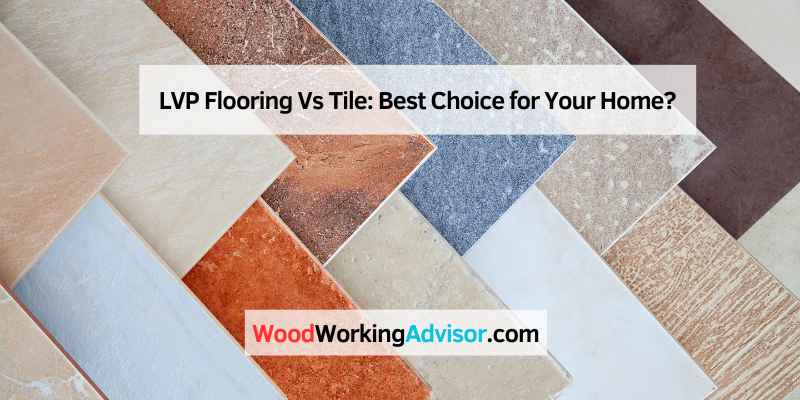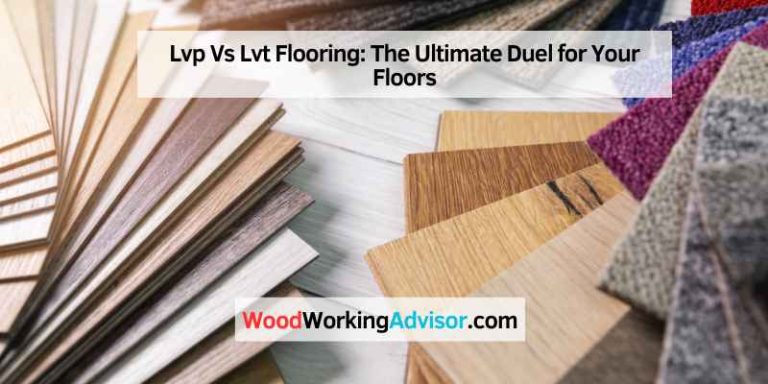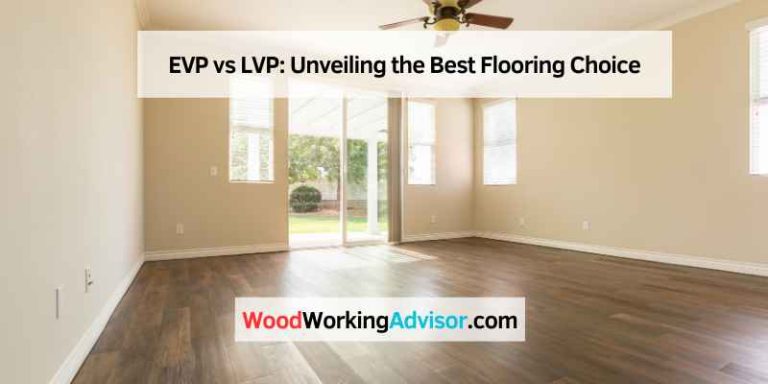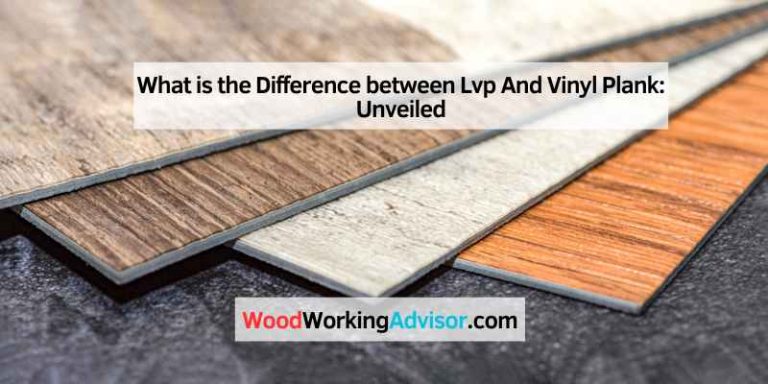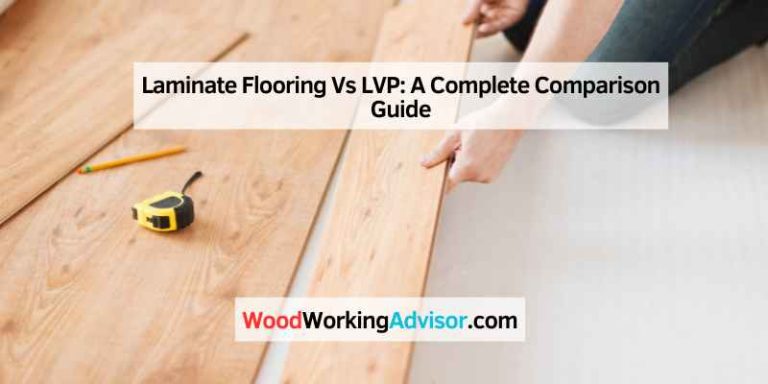LVP Flooring Vs Tile: Best Choice for Your Home?
When comparing LVP flooring vs. Tile, consider that LVP is budget-friendly and offers more design options, while tile is known for durability and classic appeal. The choice depends on your specific needs and preferences.
Vinyl plank flooring (LVP) and tile are both popular choices for homeowners, each with its own set of advantages. LVP is often more cost-effective, easier to install, and provides a wide range of design possibilities. On the other hand, tile is recognized for its long-lasting nature, timeless aesthetic, and resistance to heat.
Understanding the differences between these two options can help you make an informed decision based on your requirements.
Introduction To LVP And Tile Flooring
When choosing between LVP and tile flooring, consider factors such as cost, durability, and design versatility. LVP offers a budget-friendly option with easy installation and various design options, while tile flooring is known for its durability and classic aesthetic. Consider your specific needs before making a decision.
Initial Considerations For Home Flooring
Choosing the right flooring for your home is a significant decision that can impact the overall aesthetic and functionality of your living space. When considering flooring options, it’s essential to assess factors such as durability, maintenance requirements, cost, and design versatility to ensure that your choice aligns with your specific needs and preferences.
Brief History Of LVP And Tile
Luxury Vinyl Plank (LVP) flooring has gained popularity in recent years due to its affordable price point, ease of installation, and wide range of design options. In contrast, tile flooring, particularly ceramic and porcelain tile, has been a staple in home design for centuries, known for its timeless appeal and exceptional durability.
Aesthetic Appeal And Design Options
When it comes to choosing between LVP flooring and tile, one of the key considerations is the aesthetic appeal and design options they offer.
Visual Versatility Of LVP
LVP boasts a wide range of design options, providing versatility to suit various interior styles. It can mimic the look of natural materials like wood and stone, offering a cost-effective way to achieve a high-end aesthetic.
Timeless Elegance Of Tile
Tile exudes timeless elegance with its classic aesthetic. It is known for its durability, making it a popular choice for areas with high foot traffic. Additionally, tile offers a wide array of colors, patterns, and finishes to elevate any space.
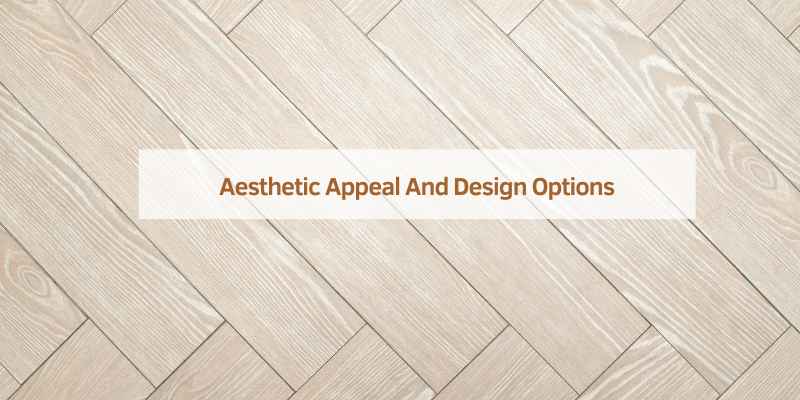
Installation Process And Costs
When it comes to choosing between LVP (Luxury Vinyl Plank) flooring and tile, understanding the installation process and costs can play a crucial role in making the right decision for your home. Each option offers its own unique advantages and considerations when it comes to installation.
Ease Of LVP Installation
LVP flooring is known for its ease of installation, making it a popular choice among homeowners. The installation process involves placing the vinyl planks directly on top of the existing subfloor or underlayment. This eliminates the need for any extensive preparation work, such as removing the previous flooring or applying adhesive.
With LVP, you have the option of either a click-lock or glue-down installation method. The click-lock system allows the planks to interlock, creating a floating floor that is easy to install and remove if needed. On the other hand, the glue-down method ensures a more permanent and stable installation.
One of the advantages of LVP is that it can often be installed as a do-it-yourself project, saving you money on installation costs. However, it is important to note that professional installation is still recommended for achieving the best results, especially in larger areas or if you have little experience with flooring installation.
Tile Flooring: Professional Skills Required
Installing tile flooring, on the other hand, typically requires professional skills and expertise. The process involves several steps, including preparing the subfloor, applying mortar or adhesive, laying the tiles, and grouting. It is important to ensure proper alignment, spacing, and leveling to achieve a professional and durable finish.
Tile installation requires specialized tools and equipment, such as tile cutters, trowels, and spacers. It also involves more time and effort compared to LVP installation. Hiring a professional tile installer can ensure that the job is done correctly and efficiently, saving you the hassle and potential mistakes that could occur with a DIY approach.
It is worth noting that the cost of tile installation can be higher than LVP due to the additional labor and expertise required. The cost may vary depending on factors such as the type of tile, the size of the area, and any additional customization or patterns.
In conclusion, the installation process and costs of LVP flooring and tile differ significantly. LVP offers a relatively easy and DIY-friendly installation process, while tile requires professional skills and equipment. The choice between the two options should consider your budget, preference, and the desired look and durability of your flooring.
Regardless of your choice, it is always recommended to consult with a flooring professional to ensure that you make an informed decision and achieve the best results for your home.
Durability And Maintenance
When it comes to durability and maintenance, LVP flooring and tile both have their unique advantages. While tile is known for its classic aesthetic and heat resistance, LVP is often more budget-friendly, easier to install, and offers more design versatility.
However, LVP cannot be refinished and excessive water exposure can cause damage over time. The choice between LVP flooring and tile ultimately depends on your specific needs.
LVP Resilience And Care
Luxury Vinyl Plank (LVP) flooring is known for its durability and resilience. It is scratch-resistant, making it an excellent choice for high-traffic areas. The top layer of LVP is made of a protective coating that can withstand spills, stains, and moisture, making it easy to clean and maintain. To care for LVP, simply sweep or vacuum regularly to remove dirt and debris. For deeper cleaning, use a damp mop with a mild cleaning solution.
Tile’s Longevity And Upkeep
Tile flooring has been around for centuries and is known for its longevity and classic aesthetic. When properly installed and maintained, tile can last for decades. It is also heat-resistant, making it an excellent choice for kitchens and bathrooms. However, tile requires regular upkeep to maintain its appearance. Grout lines can trap dirt and stains, making it necessary to clean regularly with a grout cleaner. In addition, tile can chip or crack, requiring replacement of individual tiles.
In conclusion, both LVP and tile have their unique advantages when it comes to durability and maintenance. LVP is resilient and easy to care for, while tile is long-lasting and heat-resistant. The choice ultimately depends on your specific needs and preferences.
Budget-friendly Flooring Choices
Vinyl plank (LVP) flooring and tile are both great budget-friendly flooring options, but they have different benefits. LVP is more budget-friendly, easier to install, and offers more design versatility, while tile is known for its durability, classic aesthetic, and heat resistance.
The choice between LVP flooring vs tile ultimately depends on your specific needs and preferences.
Comparing LVP And Tile Pricing
When it comes to budget-friendly flooring choices, luxury vinyl plank (LVP) and tile are two popular options. While tile flooring is known for its durability and classic aesthetic, LVP is often more budget-friendly and offers more design versatility. When it comes to pricing, the cost of tile flooring can vary depending on the type of tile you choose. Ceramic and porcelain tiles are often more expensive than LVP. In addition to the cost of the tile itself, there are also installation costs to consider. Tile installation can be more expensive and time-consuming than LVP installation, which can add to the overall cost.
Cost-effectiveness Over Time
While LVP may be a more budget-friendly option upfront, it’s important to consider the cost-effectiveness over time. LVP is durable and easy to maintain, but it cannot be refinished. Over time, the surface of LVP can deteriorate and wear down, which can impact its appearance. If this happens, the only option is to replace the flooring, which can be costly. On the other hand, tile flooring is known for its durability and can last for many years. Although tile may require occasional repairs, it can be refinished to restore its appearance. While tile may be more expensive upfront, its cost-effectiveness over time may make it a more budget-friendly option in the long run.
In conclusion, when it comes to budget-friendly flooring choices, both LVP and tile have their advantages and disadvantages. While LVP may be more budget-friendly upfront, tile may be a more cost-effective option in the long run. Ultimately, the choice depends on your specific needs and preferences.
Water And Heat Resistance
When comparing flooring options, water and heat resistance are crucial factors to consider. Let’s explore the specific properties of LVP flooring and tile in terms of their ability to resist water and heat.
LVP’s Water-resistant Properties
LVP, or luxury vinyl plank, boasts impressive water-resistant properties. Its synthetic core material enables it to withstand moisture and spills, making it suitable for areas prone to water exposure, such as kitchens and bathrooms.
Tile’s Superior Heat And Water Defiance
On the other hand, tile offers superior heat and water defiance, especially in areas with high temperatures and humidity. Its hard surface and grout lines create a nearly impervious barrier against water and heat, making it an ideal choice for areas like outdoor patios and steam rooms.
Environmental Impact And Sustainability
When it comes to choosing flooring materials, it’s important to consider the environmental impact and sustainability of your options. Both LVP flooring and tile have their own eco-friendly qualities, making them popular choices for green building projects. Let’s take a closer look at the eco-friendliness of LVP and tile flooring, as well as their contribution to green building practices.
Eco-friendliness Of LVP Flooring
LVP, or luxury vinyl plank, is known for its eco-friendly attributes. It is often made from recycled materials, and many manufacturers have adopted sustainable production practices to minimize environmental impact. Additionally, the durability and longevity of LVP flooring contribute to reduced waste, as it requires less frequent replacement compared to other flooring materials.
Tile Flooring And Green Building
Tile flooring, especially ceramic and porcelain tiles, is a popular choice for green building due to its sustainable characteristics. Tiles are typically made from natural materials such as clay, sand, and other minerals, making them environmentally friendly. Furthermore, the energy-efficient production processes and the ability to be recycled at the end of their life cycle further enhance the sustainability of tile flooring.
The Verdict: Making The Right Choice For Your Home
When it comes to choosing between LVP flooring and tile, there are several factors to consider. The decision should be based on your specific needs and preferences, as well as the unique characteristics of each type of flooring. Let’s take a closer look at the key considerations to help you make an informed decision for your home.
Homeowner’s Lifestyle Considerations
Before making a decision, it’s essential to evaluate your lifestyle and the specific requirements of your household. Consider factors such as the amount of foot traffic in the area where the flooring will be installed, the presence of pets or children, and your maintenance preferences. Additionally, think about the overall aesthetic you want to achieve and the level of durability you need from your flooring.
Final Thoughts On LVP Vs. Tile
When comparing luxury vinyl plank (LVP) flooring and tile, it’s important to weigh the pros and cons of each option. LVP offers a budget-friendly and versatile alternative to traditional tile, with easy installation and a wide range of design options. On the other hand, tile provides exceptional durability, heat resistance, and a classic aesthetic that can add timeless appeal to your home.

Frequently Asked Questions
Is Vinyl Plank Flooring Better Than Tile?
Vinyl plank flooring and tile both have their advantages. Vinyl is budget-friendly, easy to install, and offers more design options. Tile is known for its durability, classic look, and heat resistance. The choice depends on your specific needs.
Is LVP More Expensive Than Tile?
LVP is often more budget-friendly than tile, making it a cost-effective flooring option.
What Are The Cons Of LVP?
The cons of LVP include inability to refinish, surface deterioration, and costly replacement due to wear and tear.
Is LVP As Waterproof As Tile?
LVP is water-resistant but not entirely waterproof like tile. While it can withstand moisture and spills, excessive water exposure can cause damage over time. The choice between LVP and tile depends on your specific needs, with LVP being more budget-friendly and easier to install, while tile is known for durability and heat resistance.
Conclusion
Choosing between LVP flooring and tile depends on your specific needs. LVP offers budget-friendliness and design versatility, while tile provides durability and a classic aesthetic. Consider factors like installation ease and maintenance costs to make the best decision for your space.

